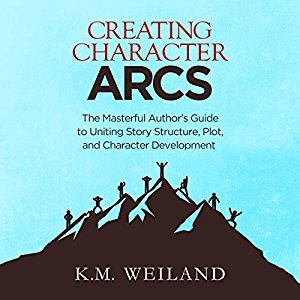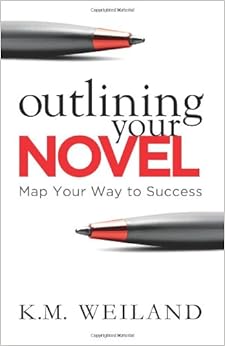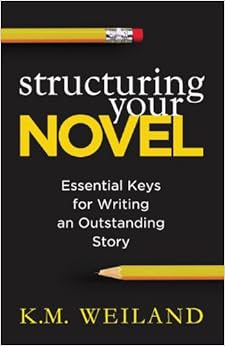 Plotting. Plodding. There’s a reason those words look and sound similar. Sometimes, plotting a novel can take all the fun out of actually writing the thing. With every move and event preordained, what’s left to surprise the writer while writing?
Plotting. Plodding. There’s a reason those words look and sound similar. Sometimes, plotting a novel can take all the fun out of actually writing the thing. With every move and event preordained, what’s left to surprise the writer while writing?
If prewriting is getting you down, I offer you an alternative: prewriting by way of character arcs.
If prewriting isn’t getting you down and you’re hardcore geeking out over it, I still recommend these books by K.M. Weiland: Outlining Your Novel and Structuring Your Novel.
Character arc. What is it? Simply, it’s the journey the character takes in a story. Expanding further, there are three types of common character arcs, according to K.M. Weiland’s Creating Character Arcs: Positive (what we usually see in movies, books, and television, also known as the hero character arc), Flat (wherein the character does not change but has the wisdom of what is right throughout the entire story, an example being the main character’s teacher or mentor), and Negative (this could be an antagonist’s character arc, or a character arc in which the character destroys others and themselves as well).
Let’s say you’d like to write a Positive Character Arc for NaNoWriMo. What does that look like? Let’s go through K.M. Weiland’s Positive Character Arc structure.
- Exposition – The Lie Your Character Believes
- Where does your character start the novel, internally speaking? Is everything perfect, utopian? Does everything suck? Does the character simply believe everything is perfect (aka the character is lying to themselves)? Set up a characteristic moment for your reader that displays your character’s…eh, character. Set them up in a fairly normal situation or normal day. And also, organize your character’s internal storm: what does the character want? Now, what does the character need?
- Exposition – Your Character’s Past
- Weiland calls this the character’s ghost. What happened to your character to make them believe that they need what they want and ignore what they truly need? Why does the character need to change?
- Act One
- Set up your character’s life in this act. Make sure their motivation(s) is clear. What is he after? What does she want?
- First Plot Point – something happens here that expands your character’s mind and vision. “The point of no return.”
- Act Two, Part One
- Adventure! That’s what your character will be doing here. Fumbling around, trying to figure things out, and definitely failing.
- Midpoint
- My favorite part in a story; the character’s realization. Maybe he’s in over his head. Maybe she realizes there’s a lot more than meets the eye. It’s the turning point not only in your story, but in your character’s thinking and possibly motivation.
- Act Two, Part Two
- This is the part where your character starts taking control. What does your character need to do to take charge?
- The Third Plot Point
- Your character’s low moment. What happened? Is morale down, did they lose something as big as a battle? The character can no longer evade the truth, they must look at it in the eye and accept it.
- Act Three
- The ramp up before the climax! Intensity, speed! Thrusters on full! In one word, your character is: determined.
- Climax
- Weiland describes the climax as the reason for the story. This is where your character realizes the truth was worth the heartache and pain along the way. The reason for the journey.
- The Resolution
- Now you can show the character living the truth instead of living in the lie they first believed at the beginning of the journey.
Instead of writing your story around what happens, with this method, you’re writing your story around what your character does to push the plot. I personally find these stories more engaging than stories where events happen to the character. I like to see the main character in control, messing up, making amends, and patching things up on their own.
I’d like to take a final moment to remind you that there is no wrong or right way to pre-write. The way that works for you IS the best way, whether that means a big, juicy outline, a short outline, pages and pages of character arcs, or jumping right in. In the end, we all must eventually jump in and write.


